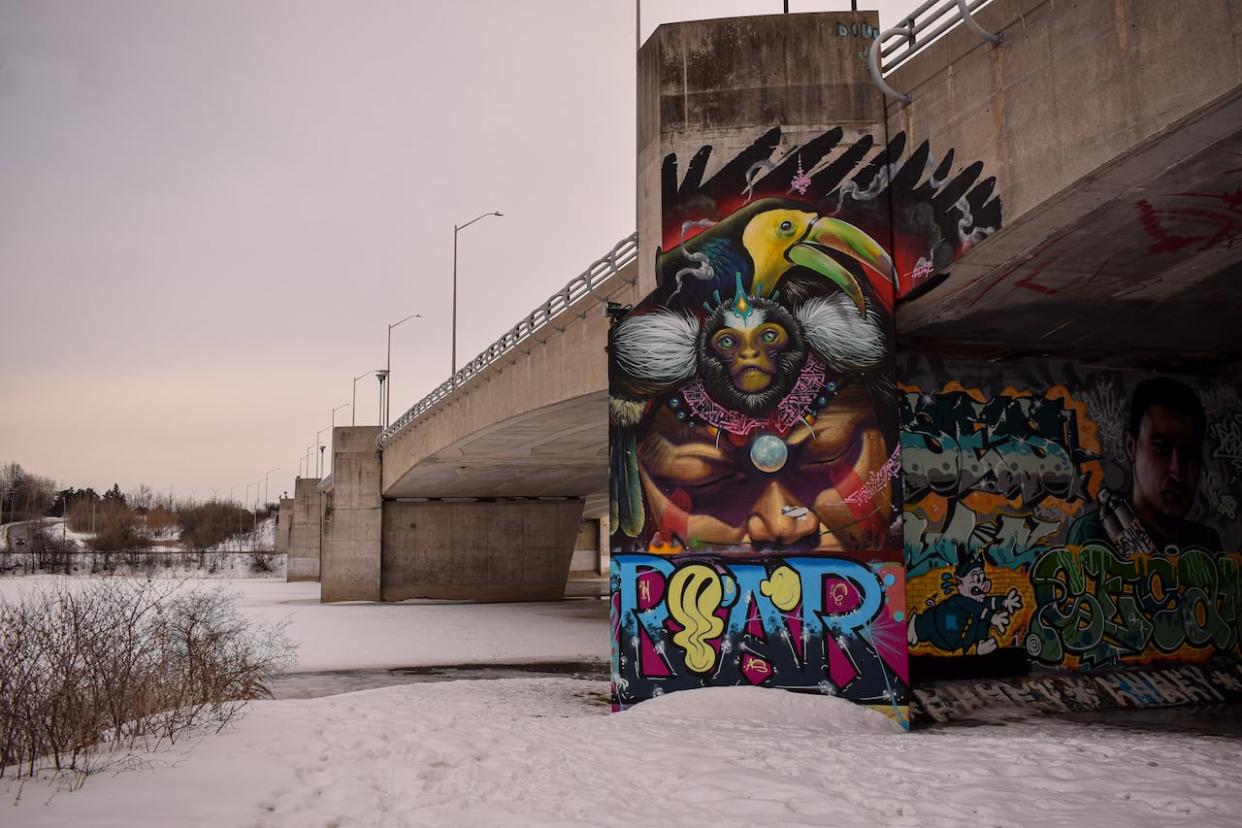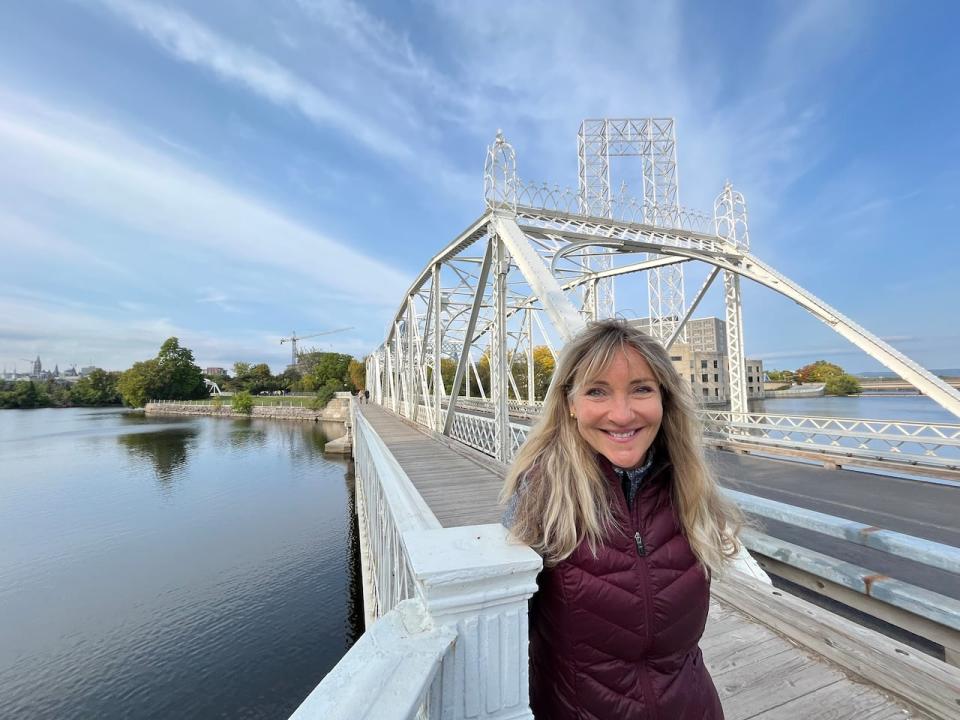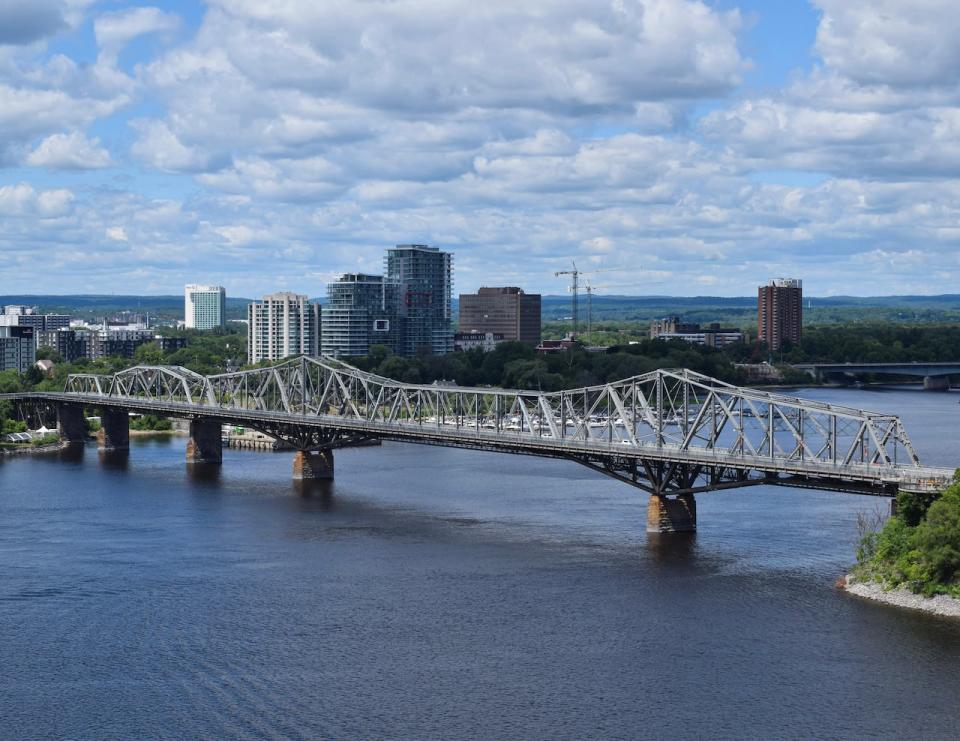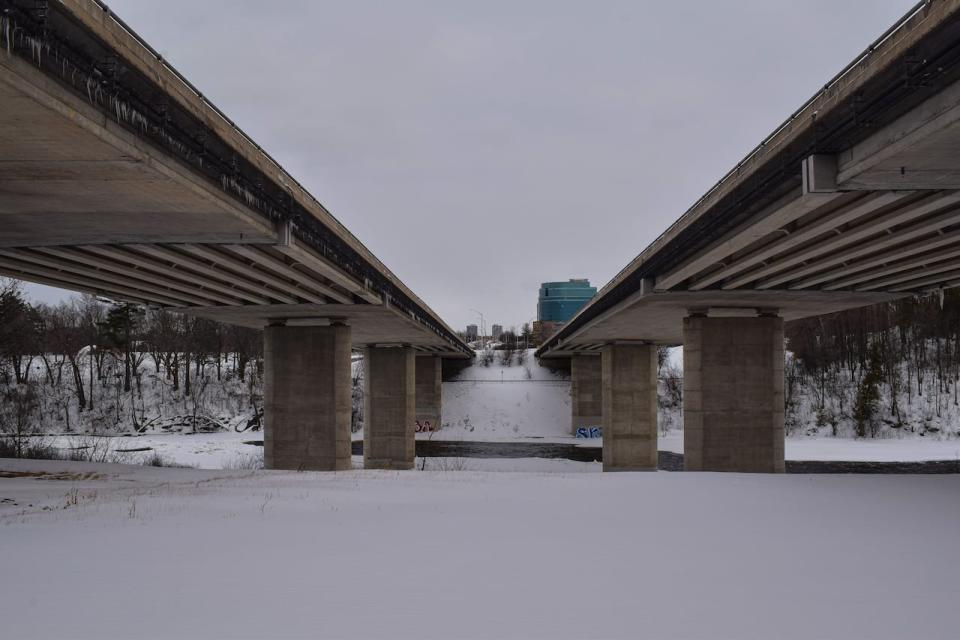Preserving the stories of 44 bridges in Ottawa-Gatineau

Bridges are common in the National Capital Region — so much so that unless they're closed or traffic is backed up, you might not give them a second thought.
Dozens span the Ottawa, Gatineau and Rideau rivers. Starting in 2021, Adriana David and her son Nicholas Pedersen spent months researching and photographing 44 of them for a coffee-table book honouring the architecture and stories behind them. (Bridges along the Jock River in south Ottawa aren't included.)
Part of David's motivation was the possible dismantling and replacement of the Alexandra Bridge near Parliament Hill, which opened in 1901. At that time, it was the fourth-longest bridge in the world at 563 metres.
"I felt this sense of urgency that we need to document the history of our bridges and our region. And it's one of the oldest bridges in Ottawa," she recently told CBC Radio's Ottawa Morning.
"I really felt passionate about getting the book out in time to document the story before modern life overtook these bold bridges."

Adriana David came to appreciate bridges more on her training runs for marathons. (Hallie Cotnam/CBC)
Interest spurred by canoe trip years ago
David's interest in bridges was sparked not long after she immigrated to Canada, when she, her partner and their dog embarked on a canoe trip of the entire Rideau Canal. It started in Kingston, Ont., and ended in the capital.
"What really struck me was coming through downtown Ottawa after having been sort of in the wilder parts of the waterway for so many days," she said.
"And then canoeing right into the downtown Ottawa core and under each and every one of the canal bridges; that's what really struck me as being historical."
She came to like them more on her many training runs for marathons.

Alexandra Bridge, as depicted in the book. When it was being built from 1899 to 1900, there was such a thick layer of pulp and sawmill sludge at the bottom of the Ottawa River (a lumber trading hub), that construction was challenging. (Nicholas Pedersen)
Bridge trivia
The book includes some interesting trivia, David said. For example, the Tour Eiffel Bridge in Gatineau, also known as the Montcalm Street Bridge, contains an original piece of the Eiffel Tower.
"There's a cool story behind that," David said. "That bridge was reconstructed in the early '90s, and the then-mayor of Paris, Jacques Chirac — who later became president of France — donated a part of the … spiral staircase of the Eiffel Tower to the mayor of Gatineau, which was then incorporated in the bridge."
And the Heron Road Workers Memorial Bridge is named for one of the biggest workplace tragedies in Canadian history, she said.

The Heron Road Workers Memorial Bridge, as seen in the book, was renamed in 2016 to commemorate the nine construction workers who died and dozens more who were injured when it collapsed in 1966. (Nicholas Pedersen)
"That was a tragedy that occurred in 1966, just near the completion of the bridge.… There were about 60 men on the bridge pouring concrete, and the weight proved to be too great for the structure and it collapsed," David said.
Nine people died and dozens were injured. Originally known simply as the Heron Road Bridge, its name was changed in 2016 to commemorate the incident.
David said she hopes the book prompts people to pay a little more attention to the bridges they rely on.
"We pass over them or by them or under them for years and years and years, and never know anything about them, and never realize how closely linked they are to the history of our region," she said.
"I hope [people] take away the concept that everything has a continuum. There is nothing that happens by chance, and everything is connected, like bridges connect people and communities."


